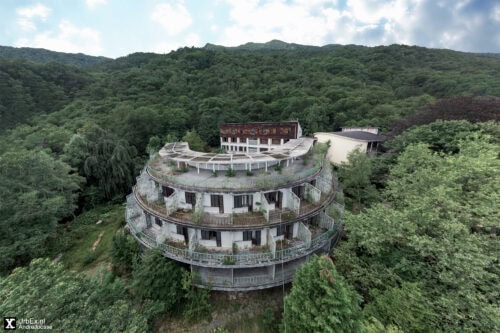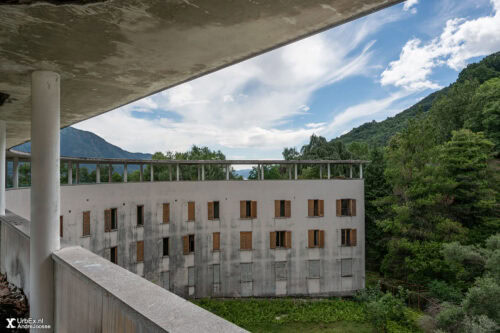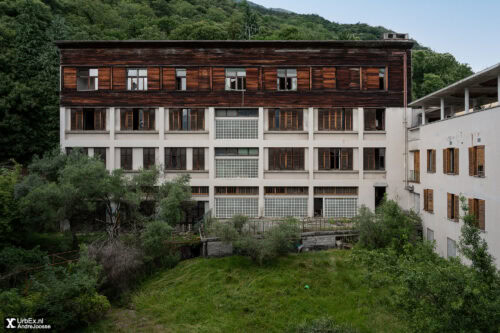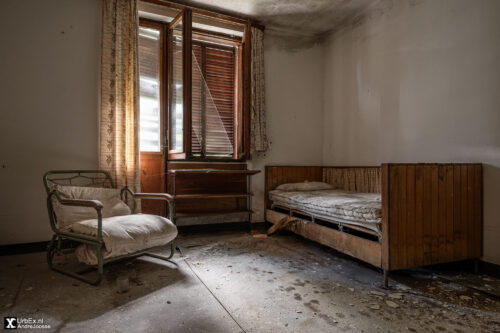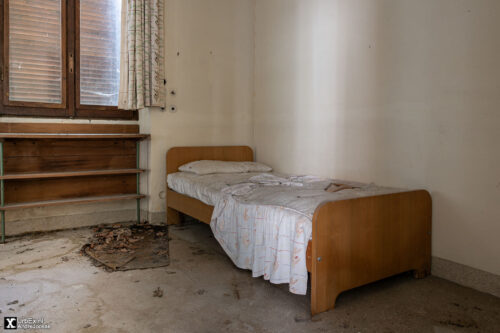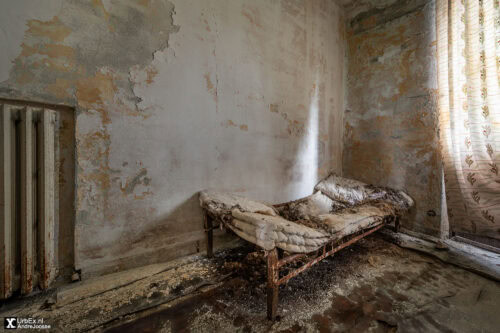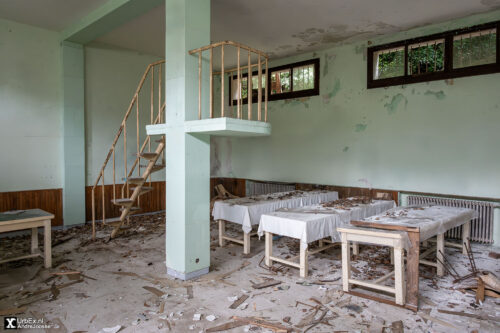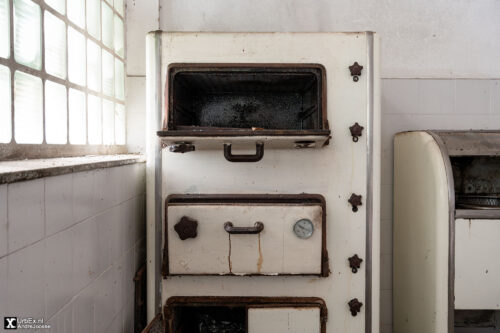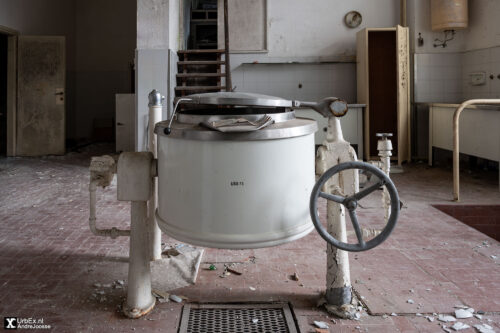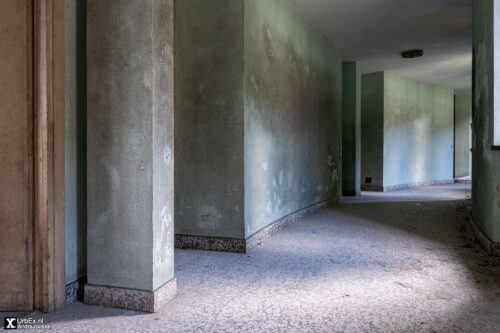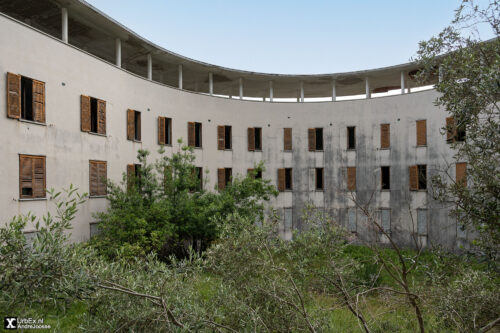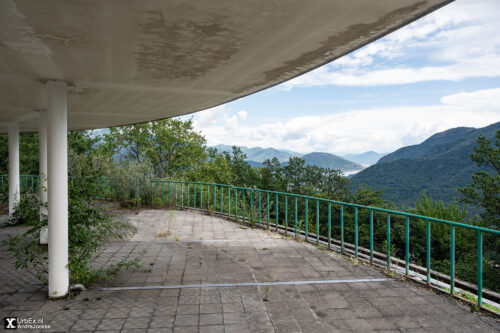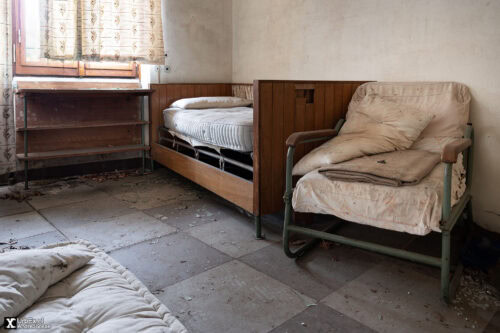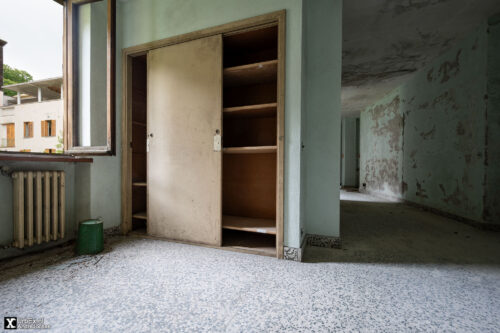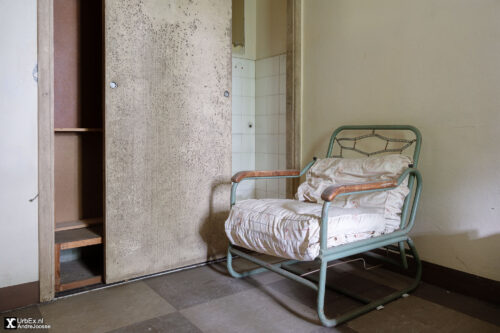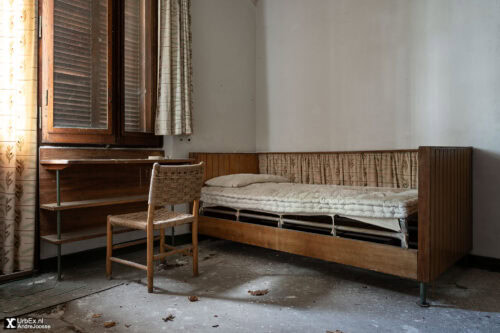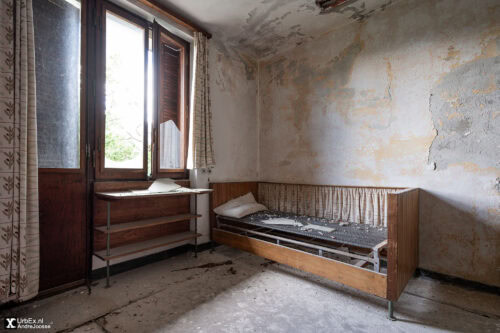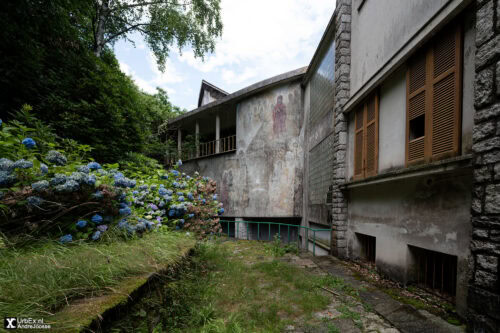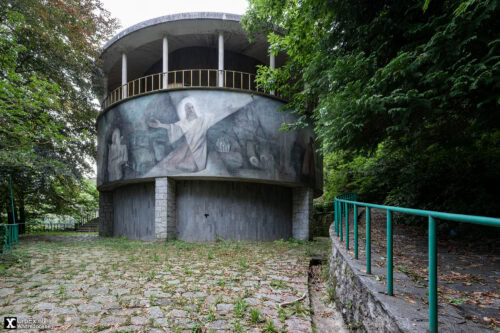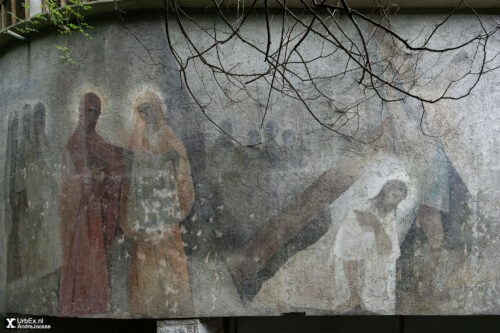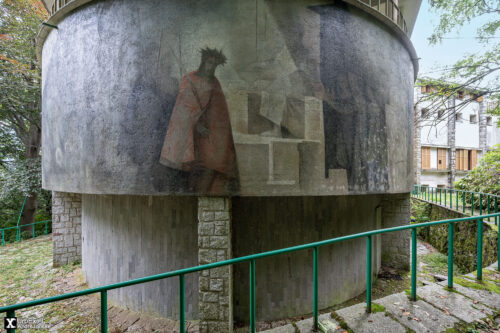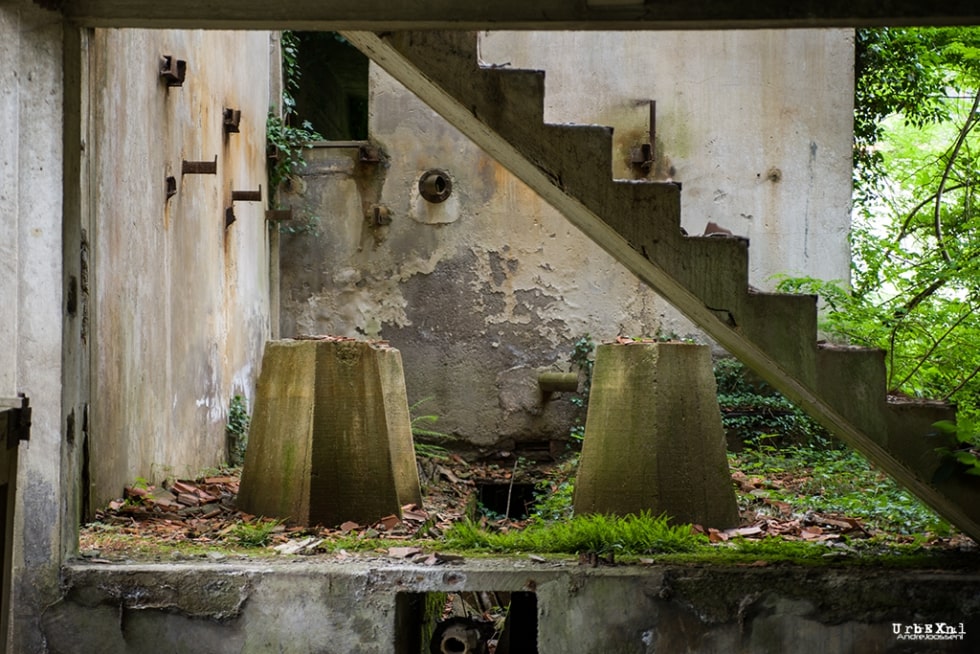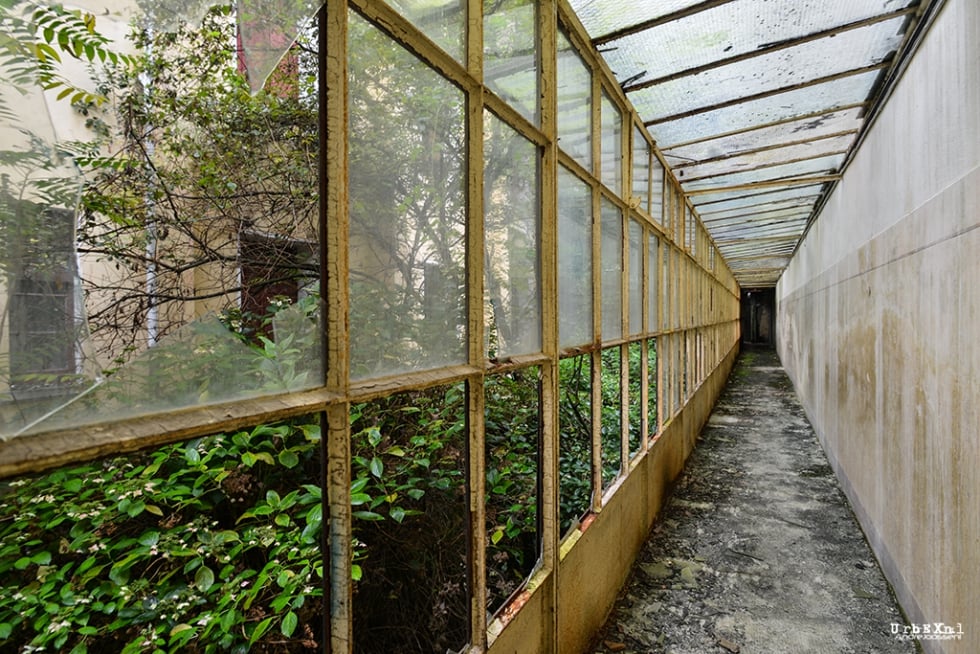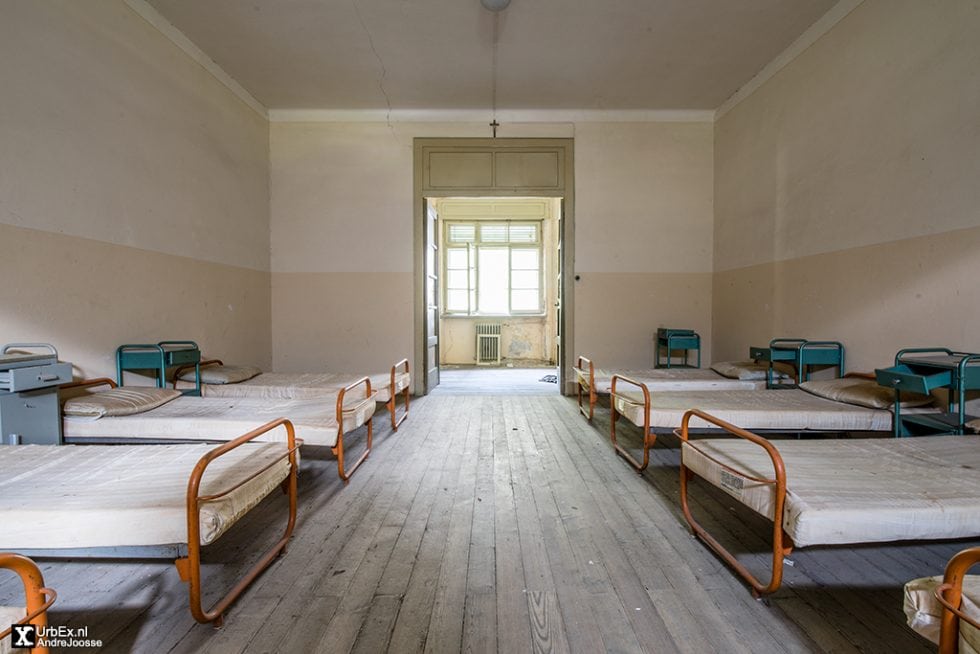Santuario Getsemani
Santuario Getsemani, the sanctuary on the hills of Lake Maggiore built in the 1950s, is truly impressive. The sanctuary was a place for prayer and reflection. Exploring the Santuario was a journey through both history and spirituality.
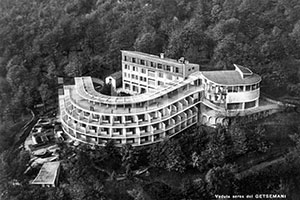
The Santuario Getsemani, located in Casale Corte Cerro, Italy, is a remarkable sanctuary. The project was initiated by Professor Luigi Gedda and designed by architect Ildo Avetta. The sanctuary was intended to be a place of spiritual retreat and meditation. The building was built in a style in line with the emerging modern art of the 1950s, and in some respects its architecture was somewhat futuristic.
Via Crucis
To get there, you follow the Via Crucis, a path completely immersed in the woods and which starts from the valley station of the old cable car. With its 700 meters of paved road in pink and gray granite, it showcases, curve after curve, fourteen ceramic artworks by Don Coltellini.
The Gethsemane cable car was built in 1956 and connected the village of Casale Corte Cerro to the sanctuary. The cable car was used to transport elderly people or those with mobility problems, unable to travel the 700 meters of the Via Crucis. The single small cabin carried two people and had two compartments for transporting luggage. The sanctuary in fact had rooms for overnight stays for pilgrims. The system still exists, but has not been working for decades.
Murals
The mural representations by the Russian painter Theodore Strawinsky, son of the great composer, are precious. The church is sealed to preserve its beautiful mosaics, stained-glass and its crypt.
Eventually, the complex was abandoned. The reasons for its abandonment are not entirely clear. It could be due to changes in the local community or the decline in the number of visitors. Over time, the sanctuary fell into disrepair. Nature began to take over. Plants grew inside the building. The paint started to peel, and the structure showed signs of aging. The artwork on the walls are still visible, though faded.
When I arrived, I was struck by the silence and the beauty of decay. The entrance was overgrown, but I carefully made my way inside. The church was, and is not accessible, it is completely walled up to protect it from vandals. The sanctuary’s blend of history, art, and spirituality makes it a unique and inspiring destination for anyone interested in exploring Italy’s rich cultural heritage. I visited the abandoned site in 2021.
